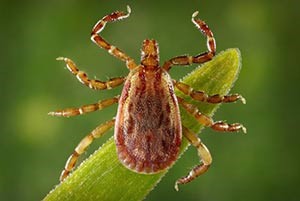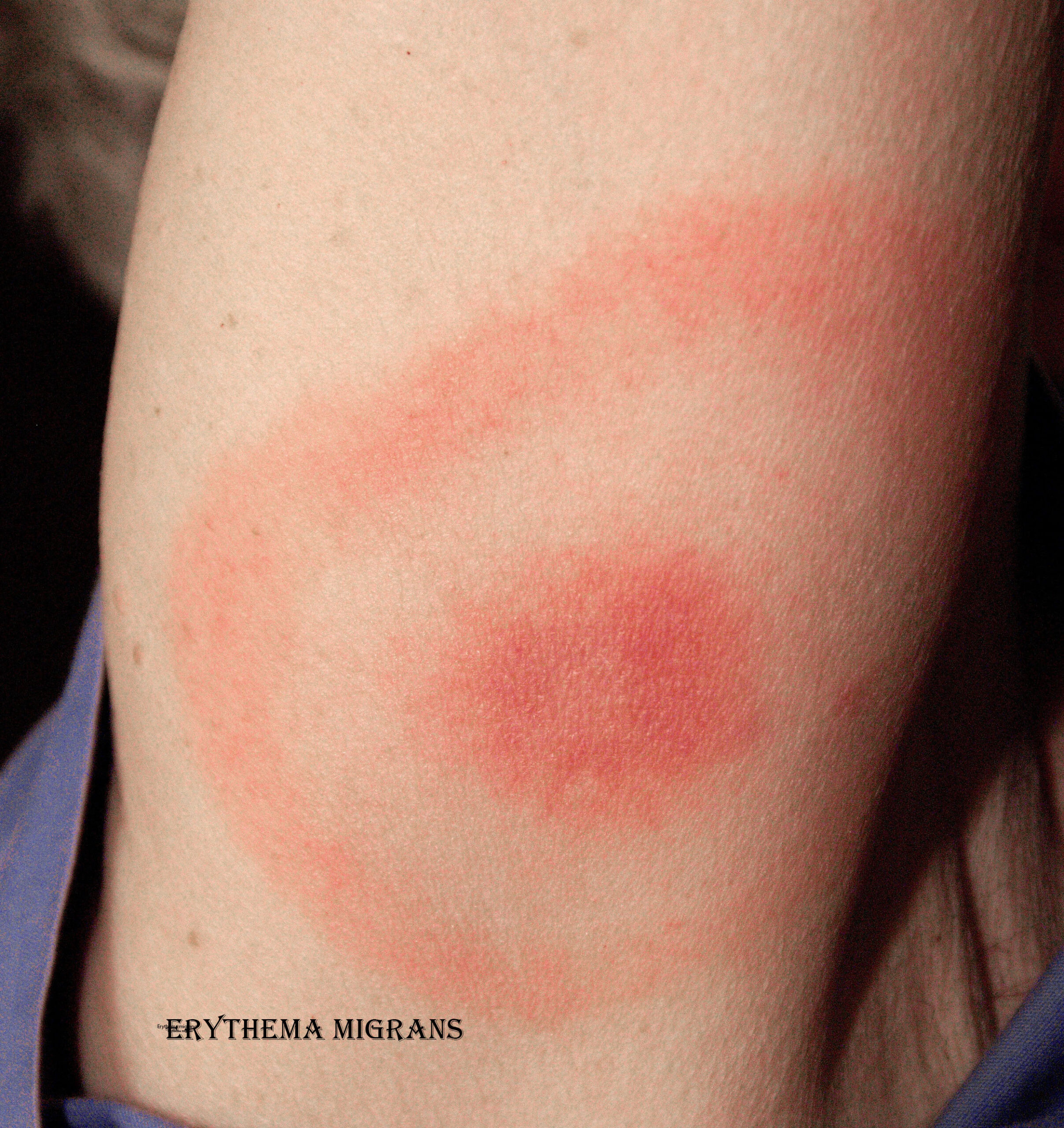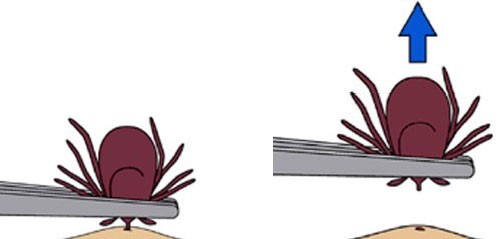
Most tick bites in Europe are from various species of Ixodidae, which attach and feed for several days if not removed. Disease transmission is the main concern and becomes more likely if ticks are attached for a longer duration.
Tick bites most often occur in spring and summer and are painless. The vast majority are uncomplicated and do not transmit disease.
 However, they often cause a red papule at the bite site and may induce hypersensitivity or granulomatous foreign body reactions. Ticks, like mites, are closely related to spiders. These small creatures, sometimes carried as parasites on the bodies of humans and animals, may transmit disease to humans. The tick bites are capable of transmitting numerous and different pathologies to man: Lyme borreliosis , ehrlichiosis , rickettsiae button fevers , tularemia. Most tick bites do not transmit disease and are painless. However, they often cause a red bump and itching at the site of the bite and may cause allergic skin reactions in some people.
However, they often cause a red papule at the bite site and may induce hypersensitivity or granulomatous foreign body reactions. Ticks, like mites, are closely related to spiders. These small creatures, sometimes carried as parasites on the bodies of humans and animals, may transmit disease to humans. The tick bites are capable of transmitting numerous and different pathologies to man: Lyme borreliosis , ehrlichiosis , rickettsiae button fevers , tularemia. Most tick bites do not transmit disease and are painless. However, they often cause a red bump and itching at the site of the bite and may cause allergic skin reactions in some people.
Diagnosis is by clinical evaluation and identification of the attached tick.
Tick Removal
If you find a tick attached to your skin, there’s no need to panic—the key is to remove the tick as soon as possible. There are several tick removal devices on the market, but a plain set of fine-tipped tweezers work very well.
How to remove a tick
Click on the image to watch video →![]()
- Use fine-tipped tweezers to grasp the tick as close to the skin’s surface as possible.
- Pull upward with steady, even pressure. Don’t twist or jerk the tick; this can cause the mouth-parts to break off and remain in the skin. If this happens, remove the mouth-parts with tweezers. If you are unable to remove the mouth easily with clean tweezers, leave it alone and let the skin heal.
- After removing the tick, thoroughly clean the bite area and your hands with rubbing alcohol or soap and water.
- Never crush a tick with your fingers. Dispose of a live tick by putting it in alcohol, placing it in a sealed bag/container, wrapping it tightly in tape, or flushing it down the toilet.
Click on the image to watch video ↑
See a health care provider immediately if the tick has burrowed into skin or if the head, mouthparts, or other tick remains cannot be removed.
Otherwise, see a health care provider if:
- You think it might be a deer tick, which is especially prevalent in the Northeast U.S. Your doctor may prescribe a single dose of an antibiotic to help prevent Lyme disease.
- You develop flu-like symptoms including fever, headache, nausea, vomiting, and muscle aches, or a rash within one month after the bite. Take the tick to the health care provider’s office or the hospital if possible.
- The bite area develops a lesion within 30 days. A sign of Lyme disease infection is a “bullseye” rash in which the center becomes clearer as the redness moves outward in a circular pattern.
- There are signs of infection such as redness, warmth, or inflammation.
Follow-up
If you develop a rash or fever within several weeks of removing a tick, see your doctor. Be sure to tell the doctor about your recent tick bite, when the bite occurred, and where you most likely acquired the tick.

Avoid folklore remedies such as “painting” the tick with nail polish or petroleum jelly, or using heat to make the tick detach from the skin. Your goal is to remove the tick as quickly as possible–not waiting for it to detach.
Sources:
ISS – Italian Higher Institute of Health
NCEZID – National Center for Emerging and Zoonotic Infectious Diseases
DVBD – Division of Vector-Borne Diseases
eMedecine

Can I simply say what a relief to uncover someone who really understands what they are discussing on the internet. You certainly know how to bring an issue to light and make it important. More people ought to look at this and understand this side of the story. I cant believe you arent more popular since you certainly have the gift.
I like this site very much so much wonderful information.